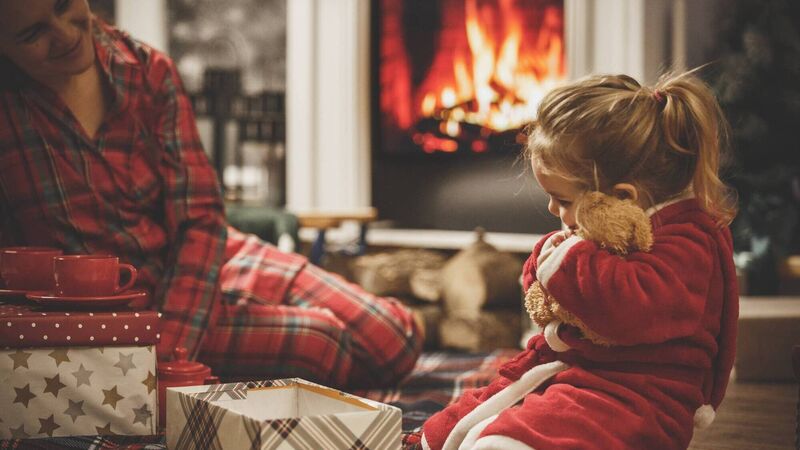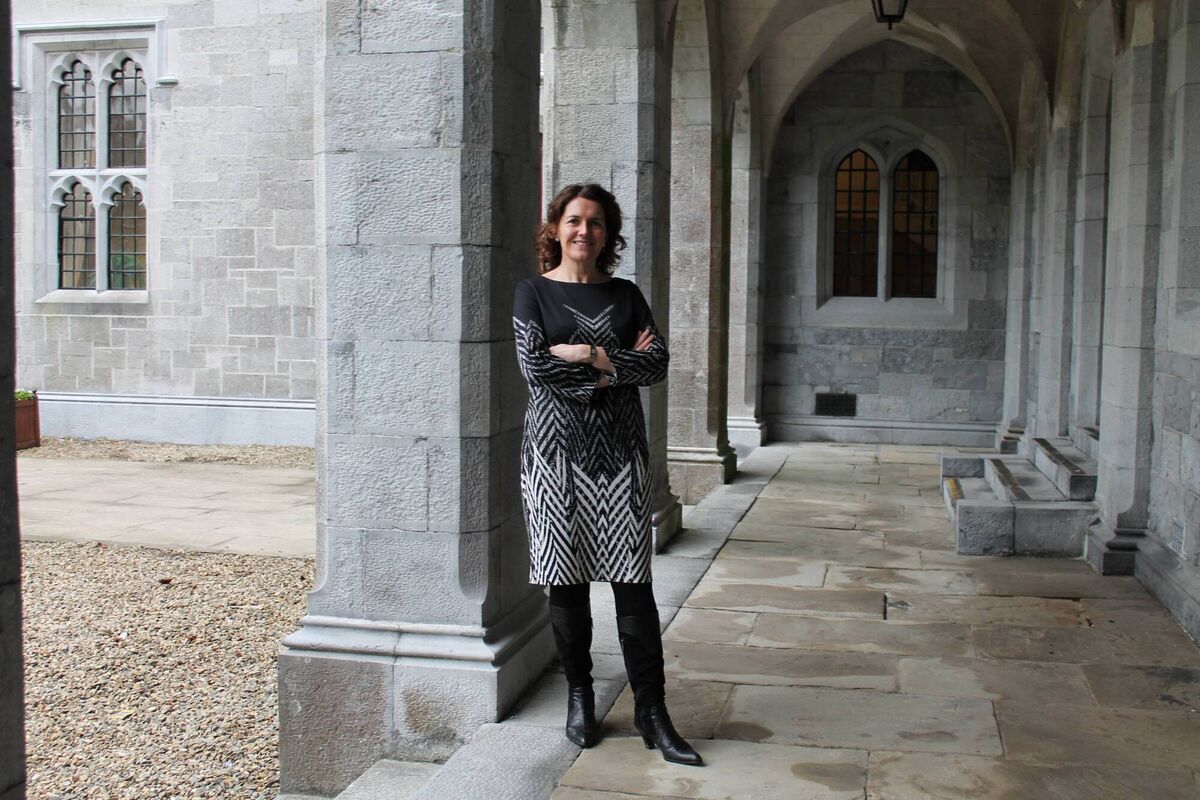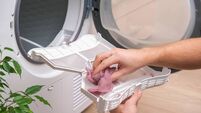Ventilation: Boost wellbeing with safer indoor air quality

Open fires and stoves must be carefully handled to avoid burdening the air with particulate matter that can be taken deep into the lung. Keep stove doors shut. File picture
We all know the old saying — build tight, ventilate right. Truly airtight, highly insulated homes smugly hovering at BERs of A3 and above, are becoming the standard, as we attempt to decarbonise hundreds of thousands of buildings in our chill, outdated housing stock. We spend 80%-90% of our time indoors, half of this at home. Every one of us breathes in around 20,000 litres of air a day. The impact on our health and overall well-being of indoor air quality (IAQ) is coming under intense scrutiny by natural scientists.
If you believed that sensory comfort and low heating bills were enough to make a happy, healthy home you would be wrong. If your home has undergone serious energy improvement, including a holistic, deep-retrofit project, it does not mean that your air quality is automatically tip-top, and the ventilation is handling the invisible burden on the air we breathe.
Dr Marie Coggins, senior lecturer in Exposure Science at the School of Physics (School of Natural Science), University of Galway, is co-author of a recently published study, “Indoor air quality, thermal comfort and ventilation in deep energy retrofitted Irish dwellings”.
The report, covering 14 homes including detached, semi-detached and one apartment retrofitted between 2018-2020, includes hair-raising results in terms of IAQ “Measurements of PM2.5, formaldehyde, total volatile organic compounds (TVOCs), carbon monoxide, radon, and carbon dioxide were made in the main bedroom and living area over a period of two days to three months (depending on the pollutant). Higher concentrations of all pollutants were measured in bedrooms. Measured ventilation extract flow rates in most participating homes would not meet the minimum performance requirements in Irish Regulations of 2019 — introduced post-completion of the retrofits in this study.

So, the air exchanges within the homes of many of these early adopters of energy retrofit were largely not enough to keep the air clean and potentially healthy. Dr Coggins adds, “Since our study, it is now a requirement for third-party compliance checks on newly installed ventilation systems to homeowners — also it is now a requirement to install flow control indicators on mechanical ventilation systems. Homeowners should check to ensure that there are no faults and that the system is working as it should.”
Without any mechanical ventilation in place (80% of Irish homes have a BER of C1 or less), the indoor air is likely heavy with the kind of domestic pressure on IAQ that occurs with everyday living and inadequate ventilation. This would include condensation, breathing, cooking, lapses in housekeeping, bringing in new VOC-heavy furnishings, and indoor emissions from fossil-fuel heating to name just a few things. It is estimated that one out of every three European children is likely living in unhealthy homes, with structural or environmental issues that affect IAQ. No one is nipping out for a quick trip to an SEAI-registered one-stop shop to sweeten the air.
A bog-standard Irish house or flat, full to the brim with intergenerational visitors, open fires and stoves ablaze this Christmas is under intense pressure this winter. What can we do to keep our indoor environment as healthy, fresh and comfortable as possible before we dig deeper with structural and retrofitted improvements that might include highly effective sensor technology for indoor pollutants? These are some recommendations anyone can put in place:
Dr Coggins advises: “The main sources of indoor air pollutants include, combustion products — burning fossil fuels for heat or cooking or smoking indoors, and also burning incense or candles. When smoking occurs indoors it dominates as a source.” There is a synergistic effect between radon and tobacco smoke that can lead to lung cancer — go to radon.ie.
Burning candles and even essential oils indoors is not entirely healthy — sorry. Use beeswax, soy and other non-paraffin products in moderation in well-ventilated areas. Try moving to battery-operated flicker candles and check the batteries in your carbon monoxide (CO) alarm today. Have your boiler serviced. All combustible fuels can release CO and other toxins into indoor air.
Use the ventilation measures in place. In past decades, what is termed air-exchanges, took place passively — streaming in and out through gaps in the building, via the passive stack ventilation of an open chimney, through trickle vents in the windows and so on. Proper ventilation is not a draught. It’s managed. Check all wall vents are clear inside and out, leave trickle vents on windows open.
Moisture or damp is also a source of indoor air pollution. Dust mites, bacteria and mould like to grow on damp surfaces and over time will emit spores or other toxins indoors. Again, be proactive.
Run bathroom fans for an extra few minutes after showering and look out for any mould growth, pooling water or signs of discreet leaks behind materials. Run bathroom fans for a few minutes after your shower is over. Ensure the filters on your cooker hood are up to date.
Pay attention to bedrooms. Dr Coggins’ study found “Higher concentrations of CO2 (>800 ppm), TVOCs and formaldehyde were detected more frequently in bedrooms than living areas.” These may be areas worthy of airing fully with open windows as you clean during a week.
An air purifier can run in a night setting, not disturbing your sleep if you have particular concerns about the bedroom. Vacuum bedroom carpeting using HEPA filtration, including all soft furnishings regularly, damp dust weekly and change bedding at least once a week, shaking heavy coverlets outside.
Place new furniture, and even flooring in the garage or a room with an open window for a few days before installation and choose low-VOC products. The research concludes, “The promotion of safer low-emitting construction materials and furnishings in energy retrofit is key to reducing indoor concentrations of formaldehyde and other TVOCs at source. PM2.5 concentration frequently exceed the WHO 24-hour guideline value for outdoor air.”
Remember this study only covered homes that were retro-fitted with mechanical ventilation in place. Most homes have inadequate and unpredictable passive ventilation.
Fire safety includes emissions. If you have an open fire or stove, ensure the chimney is swept, any wood has a low moisture content, and the draw as good as possible to pull soot and smoke out of the room. Stove doors must be kept closed during use, and even then PM2.5 (particulate matter with a diameter less than 2.5 micrometres — small enough to be inhaled deeply in the lung) is inevitable especially when starting and fuelling any fire.
Check your ventilation is optimised whatever your fire type or fuel, and vacuum around the area regularly.
Nurture cleaner air indoors with green cleaning. Wipe your shoes when coming indoors and vacuum high-traffic areas twice a week. Spray chemical cleaning products closely onto a cloth rather than using a broadcast spray or use creams.
Move to green, sustainable cleaning ingredients and give up on synthetic fragrances. Don’t mix chemistry. Ecover is just one highly available VOC-free, biodegradable, lung-friendly label or make up your own DIY arsenal. If any bottle of anything carries glaring poison notices — draw your own conclusions.
Air purifiers sized to the space working primarily with fine HEPA filtration can capture up to 99.97% of PM2.5 and PM10 particles and offer several air changes in a room over one hour. Be aware that machines creating large amounts of ozone can be hazardous for people with respiratory disorders.
Where you have a control panel for ventilation, ensure you understand its settings, readings and controls. Your landlord by law must ensure you have good, working ventilation. Dr Coggins and her team have contributed to a useful new free publication on home ventilation with the Department of Housing available online with a video.












